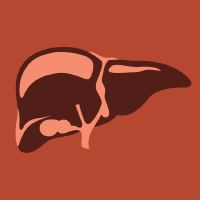Topic Menu
► Topic MenuTopic Editors


Liver Fibrosis and Cirrhosis
Topic Information
Dear Colleagues,
Liver fibrosis and cirrhosis are caused by a wide range of chronic liver diseases, including hepatitis B virus (HBV) infection, hepatitis C virus (HCV) infection, alcoholic-related liver disease, non-alcoholic fatty liver disease (NAFLD), and autoimmune liver diseases. Recent advances in molecular and cellular techniques have succeeded in providing new aspects in the diagnosis and treatment of liver fibrosis and cirrhosis. This Special Issue aims to cover the state-of-the-art researches on the basic and clinical findings in relation to the liver fibrosis and cirrhosis. We invite authors to submit original articles, as well as review articles regarding recent findings about liver fibrosis and cirrhosis. We are particularly interested in molecular approaches for the diagnosis and treatment of chronic liver diseases. Potential topics include, but are not limited to:
- Biomarkers for liver fibrosis/cirrhosis and their complications
- Genomic researches for chronic liver diseases and their complications, including gene SNPs (Single Nucleotide Polymorphisms)
- Molecular mechanisms of liver fibrosis/cirrhosis and their complications
- Recent advances in the management of liver fibrosis and cirrhosis
- Molecularly-targeted therapy for liver cancer
Dr. Hirayuki Enomoto
Dr. Tatsuo Kanda
Topic Editors
Keywords
- biomarker
- genomic research
- epigenomic research
- molecular mechanisms
- viral hepatitis
- alcoholic-related liver disease
- non-alcoholic fatty liver disease
- autoimmune liver diseases
- liver cirrhosis
- hepatocellular carcinoma
Participating Journals
| Journal Name | Impact Factor | CiteScore | Launched Year | First Decision (median) | APC |
|---|---|---|---|---|---|

Diagnostics
|
3.6 | 3.6 | 2011 | 20.7 Days | CHF 2600 |

International Journal of Molecular Sciences
|
5.6 | 7.8 | 2000 | 16.3 Days | CHF 2900 |

Journal of Clinical Medicine
|
3.9 | 5.4 | 2012 | 17.9 Days | CHF 2600 |

Livers
|
- | - | 2021 | 22 Days | CHF 1000 |

Medicina
|
2.6 | 3.6 | 1920 | 19.6 Days | CHF 1800 |

MDPI Topics is cooperating with Preprints.org and has built a direct connection between MDPI journals and Preprints.org. Authors are encouraged to enjoy the benefits by posting a preprint at Preprints.org prior to publication:
- Immediately share your ideas ahead of publication and establish your research priority;
- Protect your idea from being stolen with this time-stamped preprint article;
- Enhance the exposure and impact of your research;
- Receive feedback from your peers in advance;
- Have it indexed in Web of Science (Preprint Citation Index), Google Scholar, Crossref, SHARE, PrePubMed, Scilit and Europe PMC.

